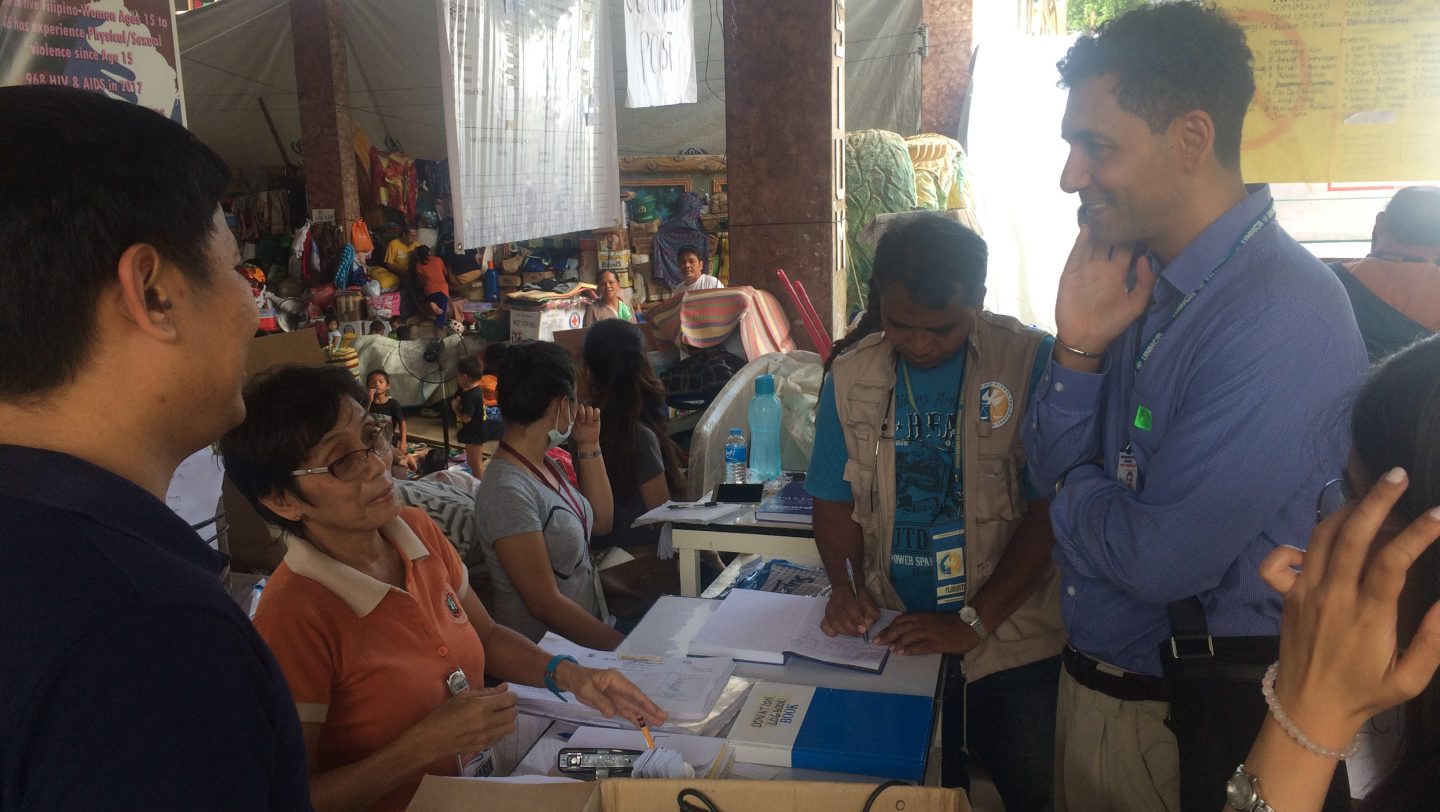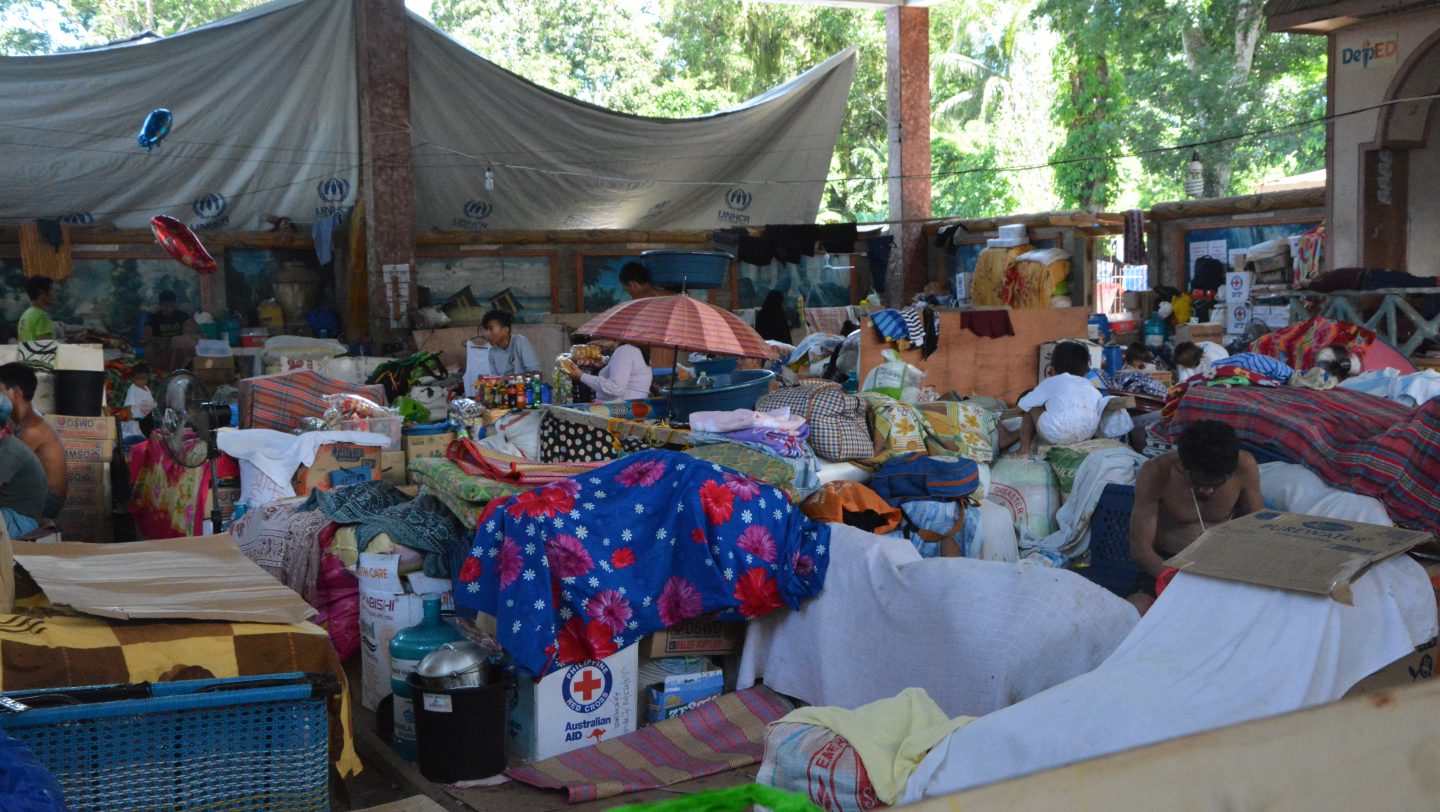Omaymah Tomawis is one of nearly 400,000 people displaced by the ongoing firefights in Marawi City. Having experienced displacement twice in her lifetime, she hopes this incident will be her children’s first and last.
Since armed conflict broke out in Marawi City on 23 May 2017, more than 350,000 people have been displaced. As government forces continue their operations to drive out the Maute group in the city, hundreds of thousands of people have fled their homes to seek refuge in nearby towns and cities.
Omaymah Tomawis, 20, is one of those who have been displaced. Three days after the firefights started, she fled her home in Tuca Marinaut with her family. “On that day, firefights have escalated and have already reached our village. We decided to leave our houses, bringing with us nothing but a few clothes,” she recalls, speaking in the local vernacular.
Since then, she and her family have been staying at the Buruun School of Fisheries in Iligan City, some 40 kilometers away north of Marawi. “A kind-hearted individual has allowed us to ride on his truck and brought us to this evacuation center. It was more than an hour of ride to safety,” Omaymah describes. “I am glad we made it.”

Omaymah with her family in their makeshift extension at the Buruun evacuation center in Iligan. Photo: © UNHCR/K. Bolisay
With the provision of plastic sheets, blankets and other non-food items from the United Nations High Commissioner for Refugees (UNHCR), the UN Refugee Agency, Omaymah and her family have built an extension to the existing evacuation center, which serves as a temporary home for her and five other families. They have been staying in the center for more than a month already.
UNHCR has maintained presence in Mindanao since 2010, co-leading the protection cluster with the government’s Social Welfare and Development agency. With over 100 members, the cluster addresses and responds to the protection needs of forcibly displaced communities affected by armed conflict and/or natural disasters. In the aftermath of the still ongoing Marawi crisis, UNHCR, with the government-led inter-cluster response, has continued its support by providing core relief items in the evacuation centers.
At the community level, UNHCR conducts protection monitoring to ensure that the issues and concerns of internally displaced persons (IDPs) are captured, brought to the attention of the stakeholders and duty bearers, and acted upon through proper coordination with other humanitarian actors.

UNHCR Philippines Head of National Office Yasser Saad visits the Department of Social Welfare and Development command post at the Buruun evacuation center. Photo: © UNHCR/Y. Palma
For Omaymah, a mother of two, the experience of fleeing home because of armed conflict was nothing new. “I have been used to this since I was eight,” she says while feeding her one year old baby. She admits, however, that this time she feels more afraid because she fled with children of her own.
“This has been my third time to flee,” she says. “I just hope that this will be my children’s first and last.”
Like all the other IDPs in the evacuation center, Omaymah hopes that the conflict will end soon so they can finally go back to their homes. As of now, she does not have any idea if their house remains standing, though she remains confident that as long as their community is declared safe from terrorism and airstrikes, they could easily cope and gain back what have been lost.

IDPs have sought shelter in this evacuation center, as the conflict in Marawi continues more than a month after firefights started. Photo: © UNHCR/Y. Palma
“I am looking forward to that day when we can finally enjoy the comfort of our home and my children can freely play and enjoy their childhood without being worried about our safety and security,” Omaymah says.
UNHCR remains committed in empowering displaced families in the Philippines not only during times of crisis. Together with the Philippine Government, UNHCR works to create enabling conditions that address the root causes of displacement, provide durable solutions to IDPs, and ensure the protection of human rights and attainment of peaceful resolution of disputes.
Share on Facebook Share on Twitter